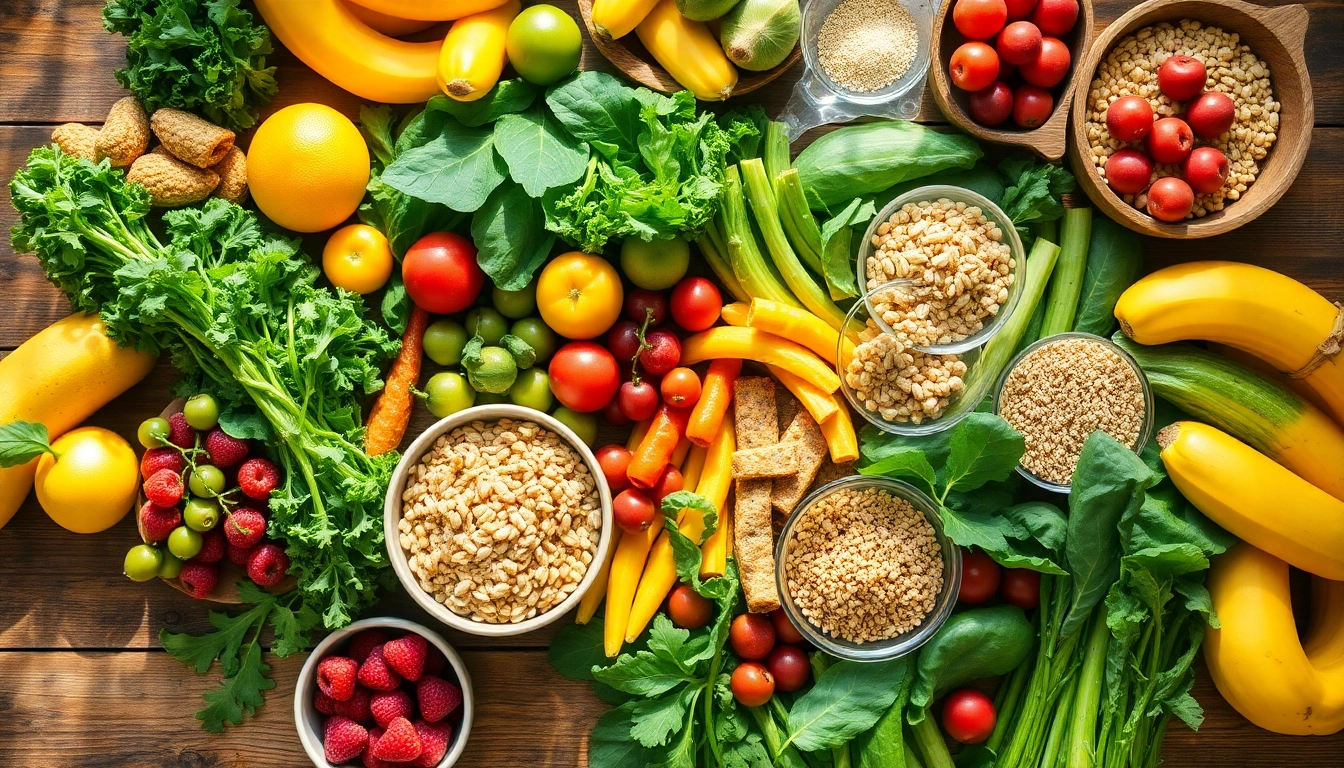Understanding Healthy Food Choices
Healthy eating is based on making better food choices that contribute to overall wellbeing. In an age where processed foods dominate our diets and lifestyle diseases are increasingly common, the importance of understanding healthy food choices has never been more critical. This section will clarify what constitutes healthy food, dive into its benefits, and address common misconceptions that may hinder healthy eating practices.
What is Healthy Food?
Healthy food consists of nutrient-dense items that provide essential vitamins, minerals, and other beneficial compounds with relatively low caloric intake. The basis of healthy food includes a wide variety of fruits, vegetables, whole grains, lean proteins, and healthy fats. These food types are high in fiber, low in saturated fats, and free from trans fats, ensuring they contribute positively to health while minimizing the risk of chronic diseases.
Benefits of Eating Healthy Foods
Incorporating healthy foods into your daily diet can yield numerous benefits:
- Weight Management: Healthy foods tend to be lower in calories which can help maintain a healthy weight.
- Reduced Disease Risk: A diet rich in fruits, vegetables, and whole grains can reduce the risk of chronic diseases such as heart disease, diabetes, and certain cancers.
- Improved Mood and Mental Clarity: Nutrient-rich foods can help improve mental health and cognitive function, combating feelings of anxiety and depression.
- Enhanced Energy Levels: Consuming balanced meals provides steady energy throughout the day, preventing energy crashes often caused by sugar-laden snacks.
Common Misconceptions About Healthy Eating
Despite the clear benefits, a number of misconceptions can deter individuals from adopting healthier eating habits. Here are a few:
- Healthy food is bland: Many believe healthy food lacks flavor, but this is easily disproven with the right recipes and spices.
- Healthy eating is expensive: While some health foods can be pricey, many affordable options like beans, grains, and seasonal fruits can fit into any budget.
- All fats are bad: Healthy fats from sources like avocados, nuts, and olive oil are beneficial and should be included in a balanced diet.
Top 10 Healthy Foods to Incorporate into Your Diet
Introducing a variety of healthy foods can significantly improve your nutritional intake and enhance overall health. Here are ten foods that deserve a spot on your plate.
Fruits: Nature’s Sweet Treats
Fruits are not only delicious but packed with antioxidants, vitamins, and minerals. Berries, apples, bananas, and oranges are excellent choices that provide essential nutrients and fiber.
Vegetables: Essential for Optimal Health
Vegetables are foundational to a healthy diet. You should aim for a variety of colors on your plate to ensure a wide range of nutrients. Dark leafy greens, cruciferous vegetables like broccoli, and colorful bell peppers not only provide essential vitamins but also promote digestive health.
Whole Grains: Nutritional Powerhouses
Whole grains such as quinoa, brown rice, and whole-wheat products retain the bran and germ, which are nutrient-rich. They are a great source of fiber that helps regulate blood sugar and sustain energy levels.
Whole grains should replace refined grains in your diet whenever possible.
Legumes: Plant-Based Proteins
Foods like lentils, chickpeas, and black beans are excellent protein sources that also provide significant health benefits, including lowering cholesterol and improving heart health.
Nuts and Seeds: Healthy Fats
Nuts and seeds are energy-dense but contain healthy fats, fiber, and protein. A handful of almonds, walnuts, or chia seeds can help keep you satisfied between meals.
Lean Proteins: Chicken, Fish, and More
Incorporating lean proteins like chicken, turkey, fish, and plant-based proteins is crucial for muscle maintenance and overall health.
Dairy or Dairy Alternatives: Calcium-Rich Options
Low-fat dairy or fortified non-dairy alternatives provide calcium and vitamin D, vital for bone health. Yogurt with probiotics can also promote gut health.
Healthy Fats: Avocados and Olive Oil
Avocados and olive oil provide heart-healthy monounsaturated fats, which can help reduce overall cholesterol levels.
Fermented Foods: Gut Health Champions
Fermented foods like yogurt, kimchi, and sauerkraut are rich in probiotics, which can improve gut health and boost immunity.
Herbs and Spices: Flavor Without Calories
Fresh herbs and spices can elevate the flavor of your meals without the extra calories associated with sauces and dressings. Regularly using these can also have anti-inflammatory benefits.
How to Plan Meals Around Healthy Food
Planning meals in advance significantly contributes to better food choices. Consider these strategies to incorporate more healthy foods into your diet.
Meal Prepping for Success
Meal prepping involves preparing entire meals or meal components in advance, ensuring you always have healthy options readily available. Start by selecting a day of the week to prepare your meals, focusing on balancing proteins, grains, and vegetables.
Keep servings in individual containers for convenience, allowing easy access on busy days.
Healthy Snacking Options
Replace traditional snacks with healthier alternatives. Instead of potato chips, try snacking on carrots and hummus or sliced fruits with almond butter. Preparing snack packs in advance can also curb unhealthy cravings.
Creating Balanced Meals
A balanced meal typically includes one source of protein, one serving of healthy fat, one or two servings of vegetables, and a whole grain. For instance, grilled chicken (protein) with quinoa (whole grain), a side of steamed broccoli (vegetable), and a sprinkle of olive oil (healthy fat) is an ideal meal composition.
Healthy Food Recipes to Try at Home
Cooking at home is an excellent way to ensure you’re consuming healthy and nutritious meals. Here are some recipe ideas that are simple to prepare.
Quick and Easy Meals Under 30 Minutes
One-pan dishes are perfect for busy evenings. Consider a stir-fry that combines quick-cooking vegetables, tofu or chicken, and a soy or teriyaki sauce for flavor. Cooking whole grain rice or quinoa as a base takes minimal time and offers a nutritious foundation.
Nutritious Breakfast Ideas
Start your day with a power-packed breakfast. Smoothies made with spinach, banana, and almond milk can be both filling and nutritious. Oatmeal topped with fruits and nuts is another excellent option that delivers lasting energy.
Creative Ways to Use Leftovers
Transform yesterday’s dinner into lunch for today. Use leftover grilled chicken in a salad with mixed greens and a vinaigrette or toss vegetables into an egg frittata for breakfast. This not only saves time but also reduces waste.
Staying Motivated to Choose Healthy Food
Establishing healthy eating habits requires dedication and motivation. Here are some strategies to help you stay on track.
Tracking Your Progress
Utilizing a food diary or a mobile app can help track what you eat and provide insights into your habit patterns. This accountability can inspire you to maintain healthier choices over time.
Benefits of Eating Together
Sharing meals with family or friends can enhance the enjoyment of eating. It provides a social aspect that can improve your relationship with food and encourages healthier eating behaviors.
Overcoming Challenges in Healthy Eating
Staying committed to healthy eating can be challenging. Identifying your triggers and developing strategies to cope with them is key. For example, if stress leads to unhealthy snacking, finding alternative stress-relief methods such as exercise or meditation can help redirect those impulses.



